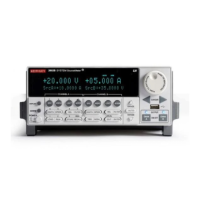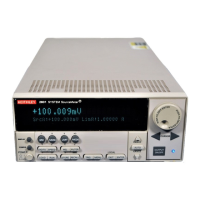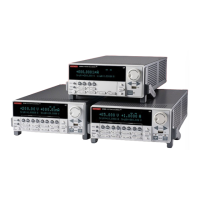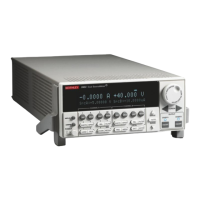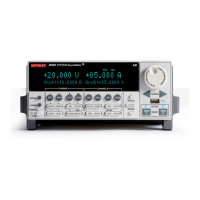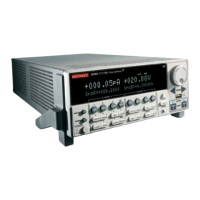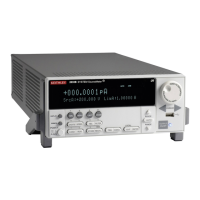System SourceMeter® Instrument Reference Manual
2600BS-901-01 Rev. C / August 2016 3
master
and subordinates • 6-47
node reset • 7-173
node, TSP-Link • 6-55
math
library functions • 6-28
measure
V or I • 4-22
measurement
current accuracy • B-12
voltage accuracy • B-17
multiple instruments, connecting
TSP-Link • 6-47, 6-48
multiple SMU connections • 2-56
N
named scripts
overview • 6-4
running • 6-5, 6-6
node
accessing • 6-51
assign number • 6-49
master overview • 6-55
nonvolatile memory
storage of scripts • 6-2
NPLC caching • 2-33
O
ohms
measurement procedure • 2-40
sensing • 2-41
operating boundaries • 4-5
continuous power • 4-6
I-source • 4-13
source or sink • 4-5
V-Source • 4-7
operator precedence • 6-18
output
current accuracy • B-7
voltage accuracy • B-15
output enable • 3-86
control • 3-87
output-off states • 2-76
output-off function • 2-77
output-off limits (compliance) • 2-78
output-off modes • 2-76
remote programming quick reference • 2-79
overheating protection • 4-2
equations • 4-2
overlapped operations in remote groups,
coordinating • 6-56
P
parallel test scripts • 6-56
password • 6-33
reset • 6-36
power
blinking • 7-68
calculations • 4-4
equations • 4-2
measurement procedure • 2-44
programming example • 2-44
remote programming • 2-44
power-on setup • 2-49
programming
interaction • 6-33
script model • 6-3
Q
queries • 5-2
queues • E-2
command • E-2
error • E-2, E-3
event • E-2
output • 2-91, E-2
R
range
auto • 2-83
available ranges • 2-81
commands • 2-85
low range limits • 2-83
output value • B-6
programming • 2-85
reading buffer
attributes • 3-16
defined buffer example • 3-18
displaying readings • 3-11
dual buffer example • 3-19
dynamically allocated • 3-17
dynamically allocated buffer example • 3-20
location number • 3-10
overview • 3-6
remote state • 3-11
removing stale values • 6-58
saving • 3-9
status • 3-17
storage • 3-9
storage control attributes • 3-13
timestamp • 3-11
readings
recalling • 3-10
recommended test equipment • B-3, B-20
registers
enable and transition • E-19
measurement event • E-24
operation status • E-22
programming example • E-25
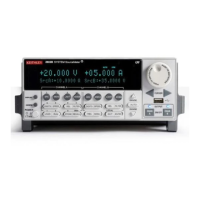
